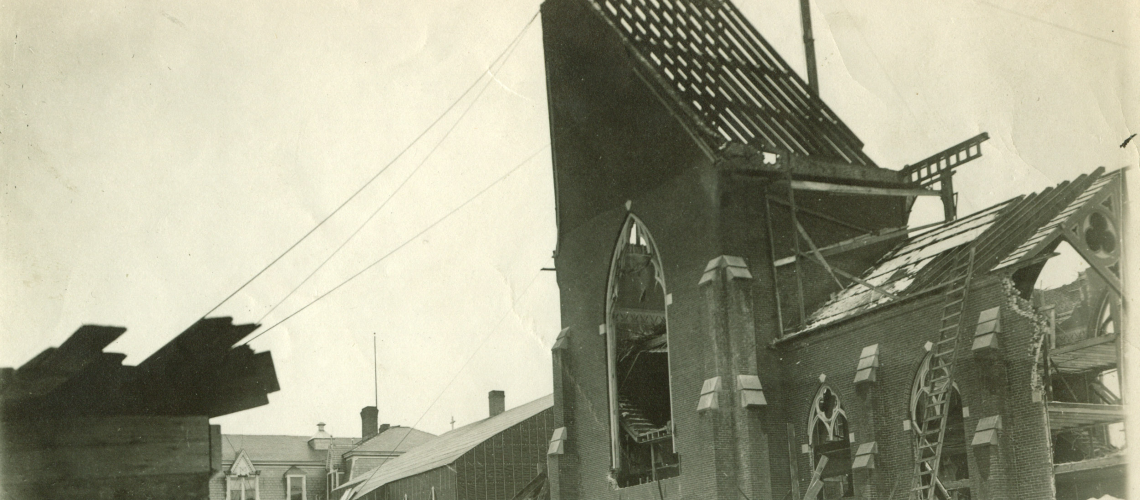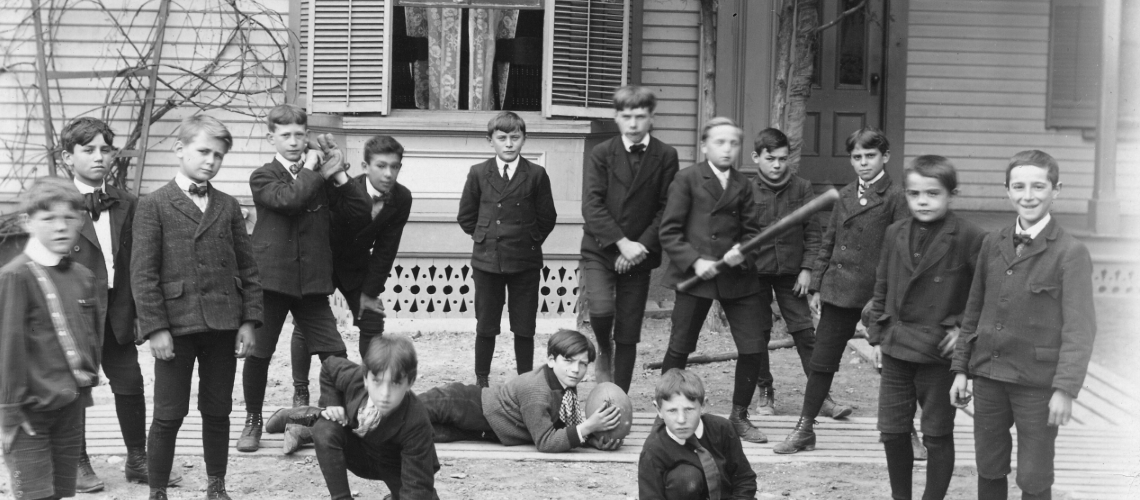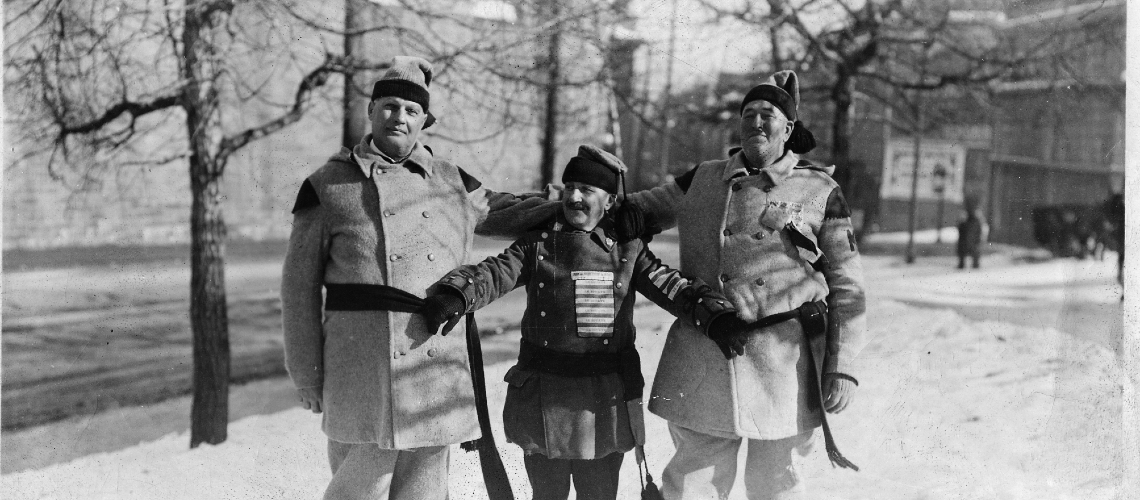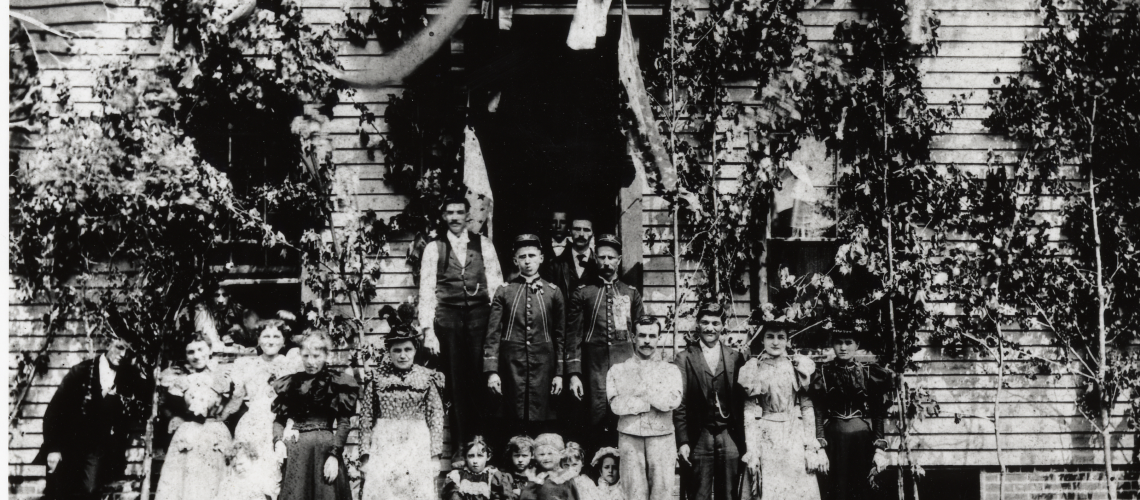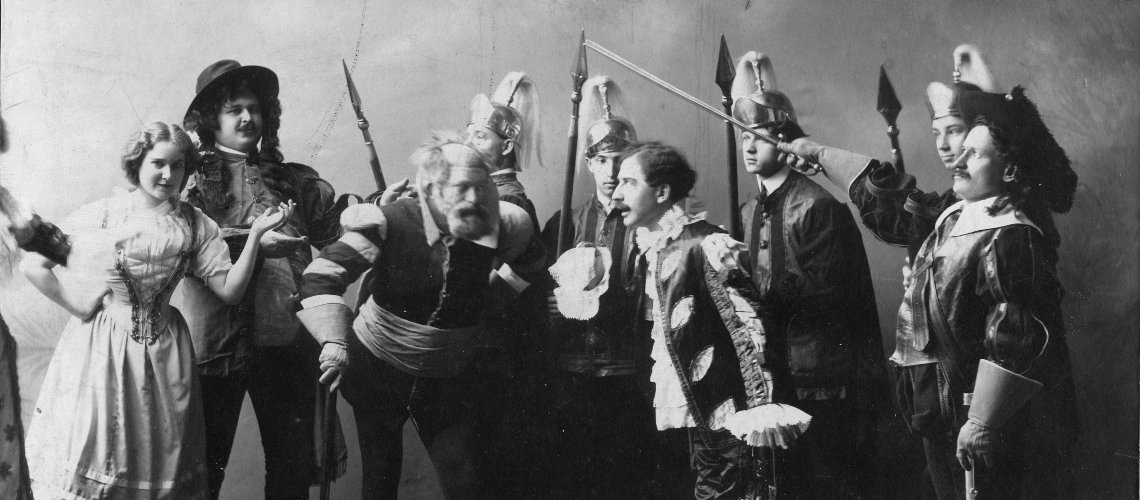The Franco-American Collection regularly holds in-person exhibits on the USM LAC campus. The Collection is also a participant in the Maine Historical Society’s Maine Memory Network (MMN), a collection of online exhibits from around the state. Collection’s exhibits on MMN are highlighted below (clicking on these links will open a new window to the Maine Memory Network):
La Basilique Lewiston
The Basilica of Saints Peter and Paul dominates the skyline of Lewiston. It is the only Catholic church in Northern New England to bear the title of basilica, and its history provides insight into the Franco-American community of Lewiston, and also into the struggles among ethnic groups for accommodation within the Roman Catholic Church in Maine.
From French Canadians to Franco-Americans
It was meant to be temporary. Once they had earned enough money, they planned to go home to their families in Quebec. But for various reasons, the French Canadians who immigrated to Maine after 1860 put down roots, invited their families to join them, and made new lives in the United States. The majority of these first-generation immigrants continued to think of themselves as Canadians, even after decades in their new country.
Les Raquetteurs
The history of snowshoeing in North America starts with Native Americans, whose development and use of snowshoes inspired French settlers to use them as well. The French Canadians named snowshoes “raquettes” because they resembled tennis rackets. Lewiston once boasted more than 15 snowshoe clubs, and Biddeford at least two, all of which were French-Canadian or Franco-American in origin. The clubs served as athletic, social and cultural hubs for the French Canadian and Franco-American community. Snowshoe clubs and their international conventions also helped preserve important ties to Canada for Franco-American immigrants.
La St-Jean-Baptiste in Lewiston-Auburn
The festival of St. John the Baptist, (or St. Jean-Baptiste, in French), the patron saint of Quebec, was a very public display of ethnic pride for Franco-Americans. St. Jean-Baptiste Day was Lewiston-Auburn’s biggest festival for over a century.
Le Théâtre
Lewiston, Maine’s second largest city, was long looked upon by many as a mill town with grimy smoke stacks, crowded tenements, low-paying jobs, sleazy clubs and little by way of refinement, except for Bates College. Yet, it was also a cultural and artistic community, as evidenced by noted Québec historian, Robert Rumilly, who described Lewiston as “the French Athens of New England” for its vibrant art scene in the 1920’s and 30’s. Theater, in particular, was popular among Lewiston’s Franco-American population.

Jean Julien Bourgault in Lewiston
2024 “Putting History to Work” intern Lydia Pease created this exhibit using items from the Franco-American Collection. The exhibit connects the work of Quebec sculptor J.J. Bourgault with Lewiston-Auburn through his work “Paysan Quebecois.”


